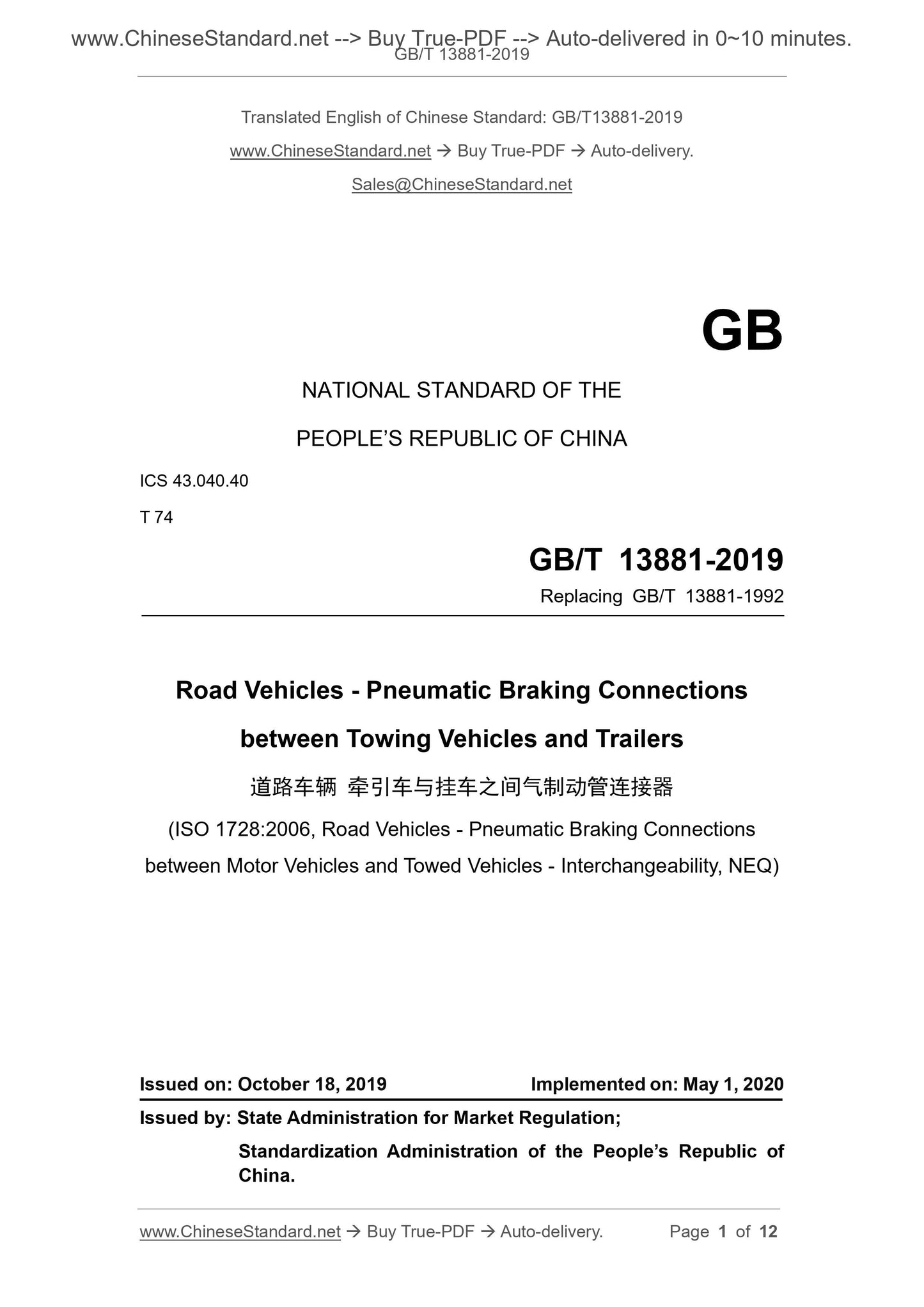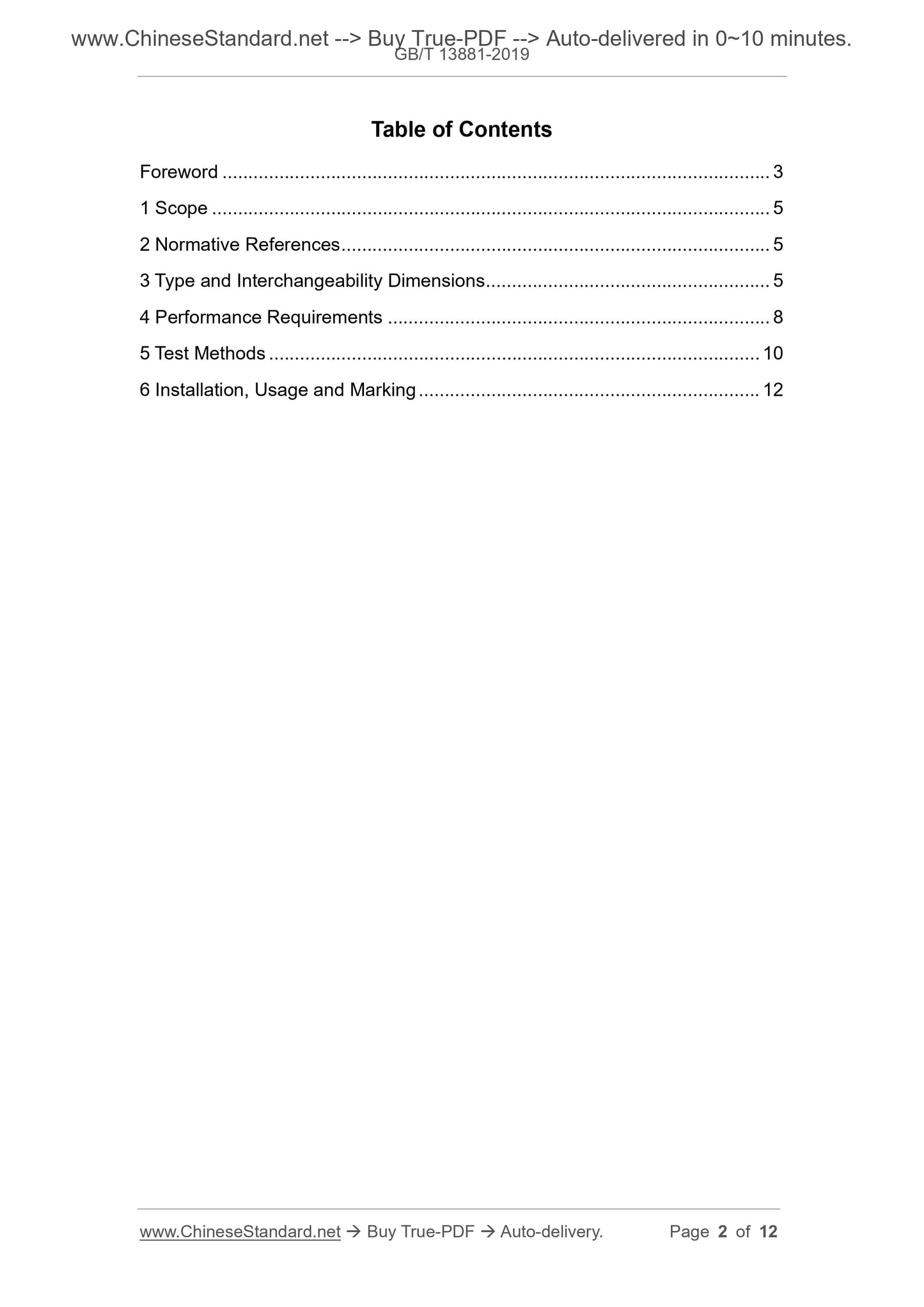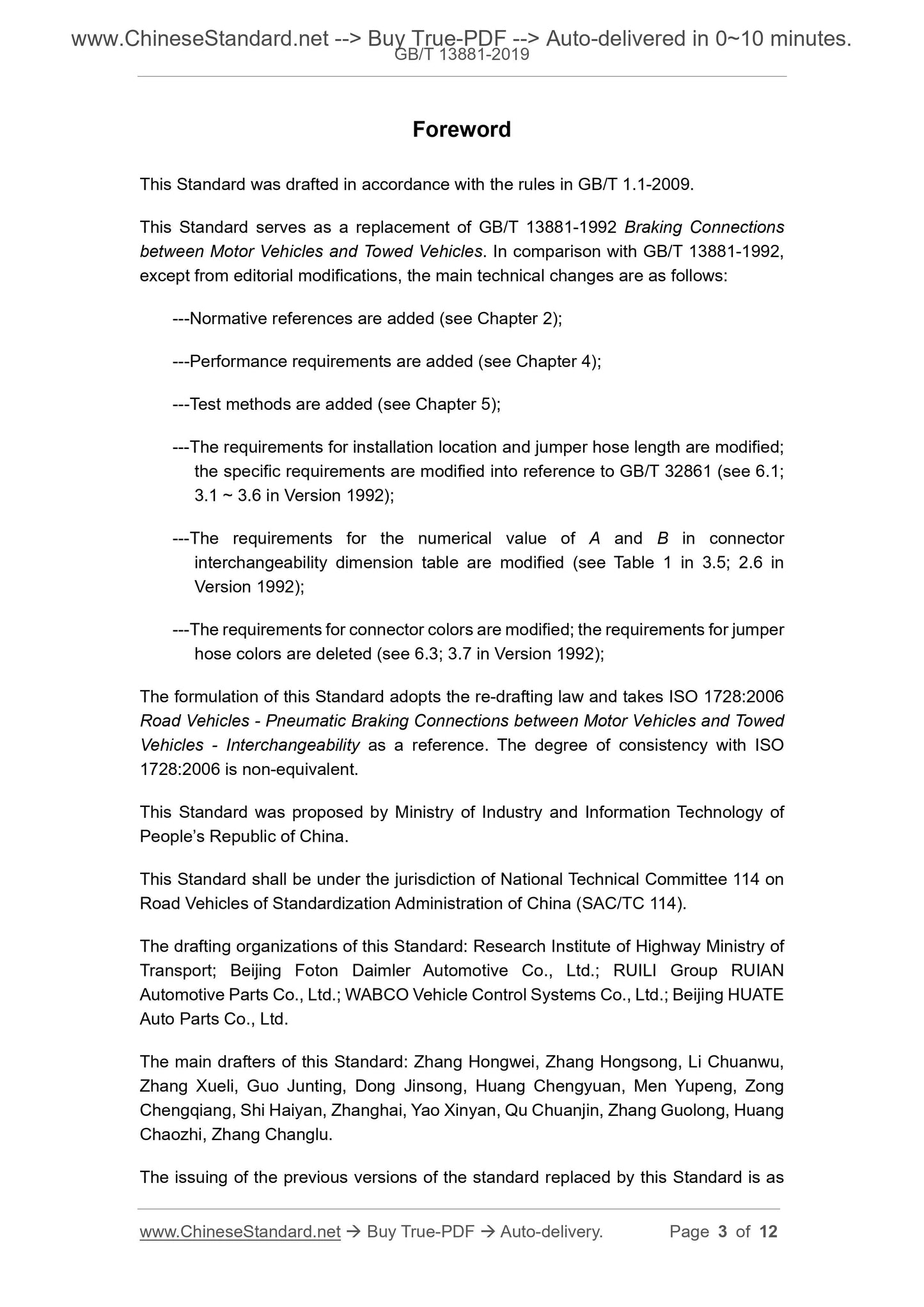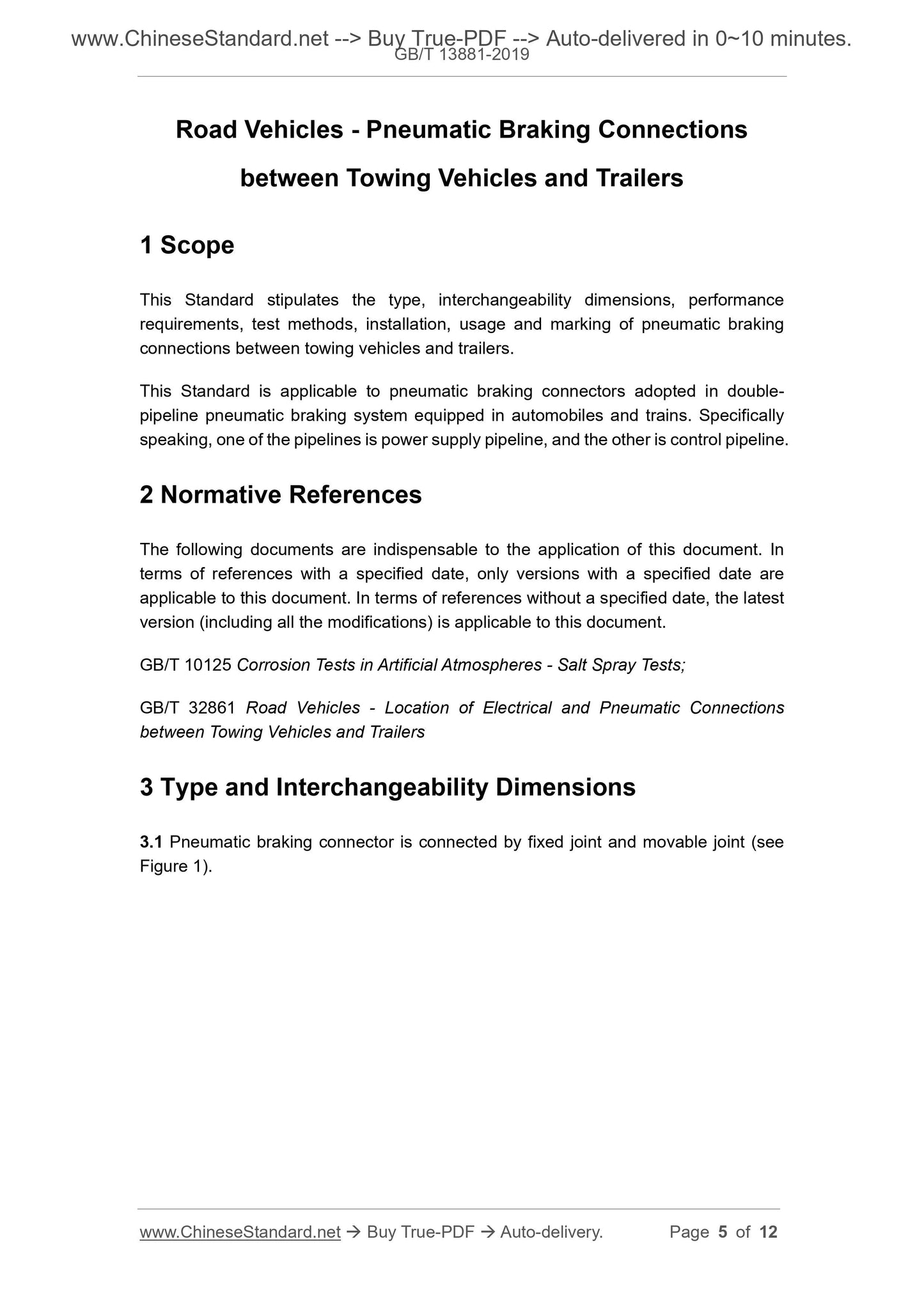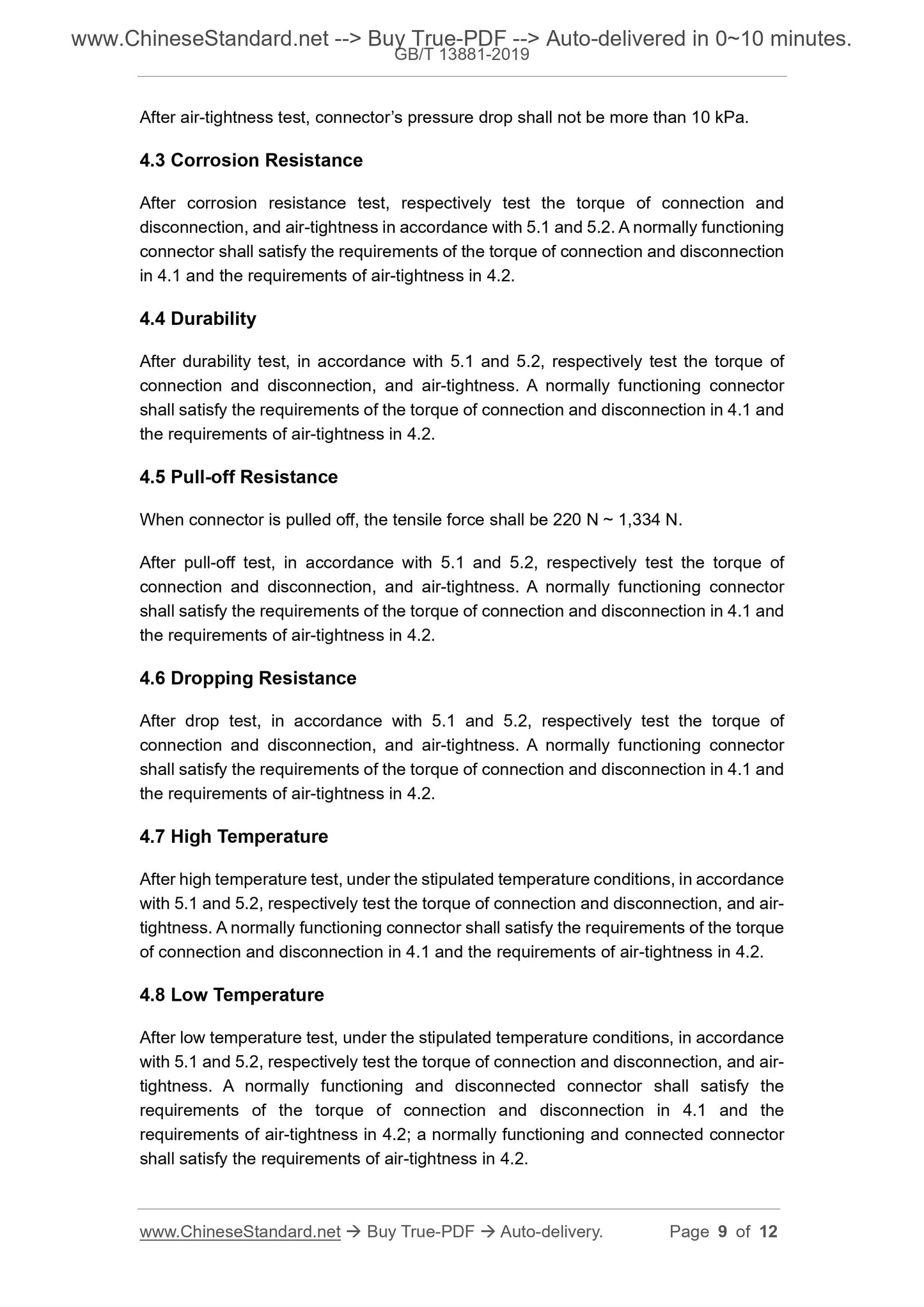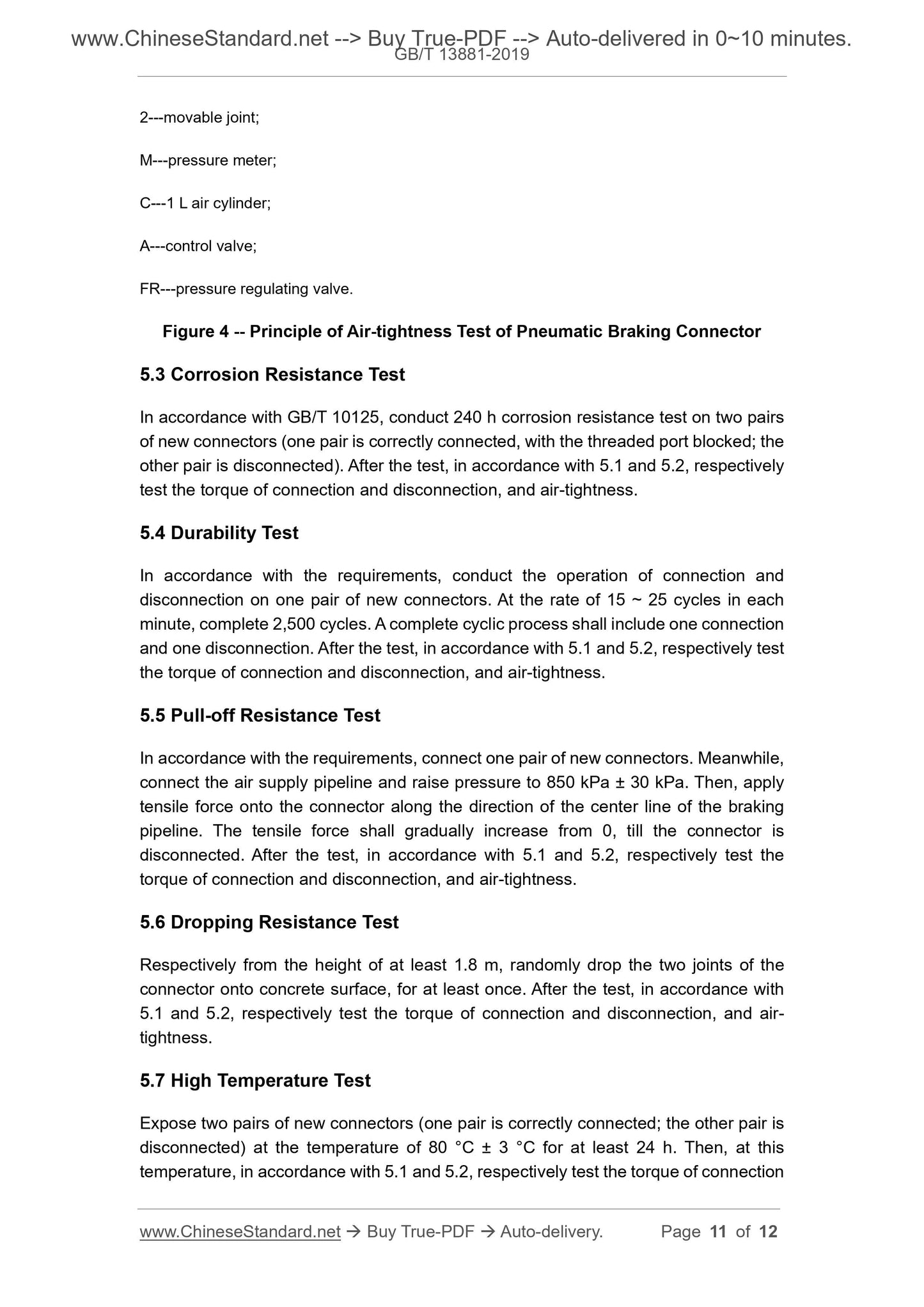1
/
of
6
www.ChineseStandard.us -- Field Test Asia Pte. Ltd.
GB/T 13881-2019 English PDF (GB/T13881-2019)
GB/T 13881-2019 English PDF (GB/T13881-2019)
Regular price
$150.00
Regular price
Sale price
$150.00
Unit price
/
per
Shipping calculated at checkout.
Couldn't load pickup availability
GB/T 13881-2019: Road vehicles - Pneumatic braking connections between towing vehicles and trailers
Delivery: 9 seconds. Download (and Email) true-PDF + Invoice.Get Quotation: Click GB/T 13881-2019 (Self-service in 1-minute)
Newer / historical versions: GB/T 13881-2019
Preview True-PDF
Scope
This Standard stipulates the type, interchangeability dimensions, performancerequirements, test methods, installation, usage and marking of pneumatic braking
connections between towing vehicles and trailers.
This Standard is applicable to pneumatic braking connectors adopted in double-
pipeline pneumatic braking system equipped in automobiles and trains. Specifically
speaking, one of the pipelines is power supply pipeline, and the other is control pipeline.
Basic Data
| Standard ID | GB/T 13881-2019 (GB/T13881-2019) |
| Description (Translated English) | Road vehicles - Pneumatic braking connections between towing vehicles and trailers |
| Sector / Industry | National Standard (Recommended) |
| Classification of Chinese Standard | T74 |
| Classification of International Standard | 43.040.40 |
| Word Count Estimation | 10,129 |
| Date of Issue | 2019-10-18 |
| Date of Implementation | 2020-05-01 |
| Issuing agency(ies) | State Administration for Market Regulation, China National Standardization Administration |
Share
